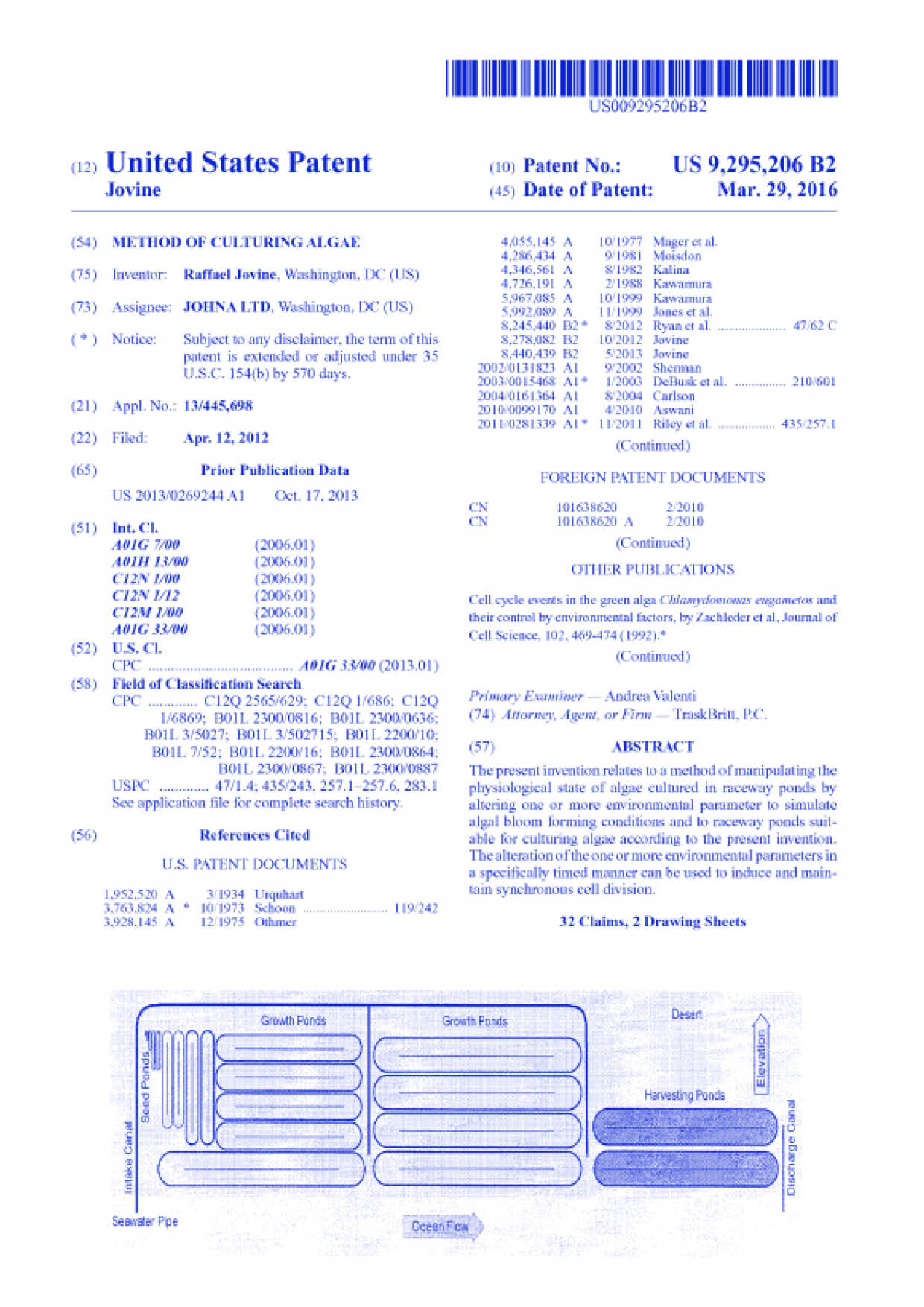
ABES
Institution, Biomass, Recycle, Neighbourhood, Technology, Patent Drawing
Algae Biomass and Energy System R&D Center was established at the University of Tsukuba on July 1, 2015. Consisting of fifty members of the university, this algae biomass research center is one of the largest of its kind in Japan. By taking an interdisciplinary approach, ABES develops and offers algae strains to various realms including a thorough research on algae-based bioenergy systems. Its six research categories further enhance developments that range from algae-based wastewater treatment systems, to the application of algae-derived oil for cosmetics and medical products. 1
However, it is not a coincidence that an ecologically concerned research center, is located on the outskirts of Tokyo and inside the Tsukuba Science City. This Japanese “Silicon valley”, acquires nearly half of Japan’s public research and development budget, and in its quest to enter the top innovation clusters of the world, in 1977, Nine National Laboratories of the Agency of Industrial Science and Technology, MITI (Ministry of International Trade and Industry) moved 50km outside of the center of Tokyo and in the valleys of Tsukuba.2 Following the move, the Research Information Processing System (RIPS) opened, and accommodated information service centers and a large ‘Information Retrieval Bibliography Documentation Data Bank’.3 In this respect, Tsukuba is similar to the Saclay Nuclear Research Centre; stretching their respective cities (Paris and Tokyo) to their breaking points, and ultimately mimicking the metabolism of the metropolitan urbanity. For in the process of institutionalizing power inputs and outputs, both Tsukuba Science City and Paris-Saclay remain totally negligent to their own power consumption. Paradoxically the data banks’ intention of classifying and accelerating energy performance is viably only in the dismissal of their own enormous consumption.
Ultimately, the only difference between Tsukuba and Saclay remains in the way they select their “sustainable” outputs - the nuclear future and the algae biomass. For these scientific clusters commitment to the remote ‘future of performance’, shall serve as ecological input to the other “frivolous” systems. In this perpetual cycle between domineering power and blind negligence of systemic inputs, the “real” and arrogant question remains: nuclear or algae biomass?
1. Algae Biomass and Energy System R&D Center, http://www.abes.tsukuba.ac.jp/en/aboutus-en, (Accessed March 10, 2020).
2. Tsukuba Science City, https://www.britannica.com/place/Tsukuba-Science-City (Accessed March 10, 2020).
3. Kimio Uno, Shuntaro Shishido. Statistical Data Bank System: Economic Database and Model Building in Japan (North Holland, 1988), p. vi, 344-5.
Visit ephemera 70 & 74
Institution, Biomass, Recycle, Neighbourhood, Technology, Patent Drawing
Algae Biomass and Energy System R&D Center was established at the University of Tsukuba on July 1, 2015. Consisting of fifty members of the university, this algae biomass research center is one of the largest of its kind in Japan. By taking an interdisciplinary approach, ABES develops and offers algae strains to various realms including a thorough research on algae-based bioenergy systems. Its six research categories further enhance developments that range from algae-based wastewater treatment systems, to the application of algae-derived oil for cosmetics and medical products. 1
However, it is not a coincidence that an ecologically concerned research center, is located on the outskirts of Tokyo and inside the Tsukuba Science City. This Japanese “Silicon valley”, acquires nearly half of Japan’s public research and development budget, and in its quest to enter the top innovation clusters of the world, in 1977, Nine National Laboratories of the Agency of Industrial Science and Technology, MITI (Ministry of International Trade and Industry) moved 50km outside of the center of Tokyo and in the valleys of Tsukuba.2 Following the move, the Research Information Processing System (RIPS) opened, and accommodated information service centers and a large ‘Information Retrieval Bibliography Documentation Data Bank’.3 In this respect, Tsukuba is similar to the Saclay Nuclear Research Centre; stretching their respective cities (Paris and Tokyo) to their breaking points, and ultimately mimicking the metabolism of the metropolitan urbanity. For in the process of institutionalizing power inputs and outputs, both Tsukuba Science City and Paris-Saclay remain totally negligent to their own power consumption. Paradoxically the data banks’ intention of classifying and accelerating energy performance is viably only in the dismissal of their own enormous consumption.
Ultimately, the only difference between Tsukuba and Saclay remains in the way they select their “sustainable” outputs - the nuclear future and the algae biomass. For these scientific clusters commitment to the remote ‘future of performance’, shall serve as ecological input to the other “frivolous” systems. In this perpetual cycle between domineering power and blind negligence of systemic inputs, the “real” and arrogant question remains: nuclear or algae biomass?
1. Algae Biomass and Energy System R&D Center, http://www.abes.tsukuba.ac.jp/en/aboutus-en, (Accessed March 10, 2020).
2. Tsukuba Science City, https://www.britannica.com/place/Tsukuba-Science-City (Accessed March 10, 2020).
3. Kimio Uno, Shuntaro Shishido. Statistical Data Bank System: Economic Database and Model Building in Japan (North Holland, 1988), p. vi, 344-5.
Visit ephemera 70 & 74


